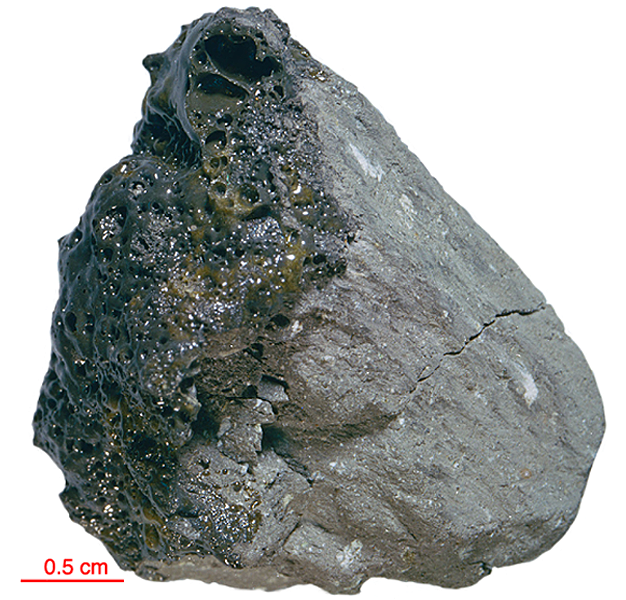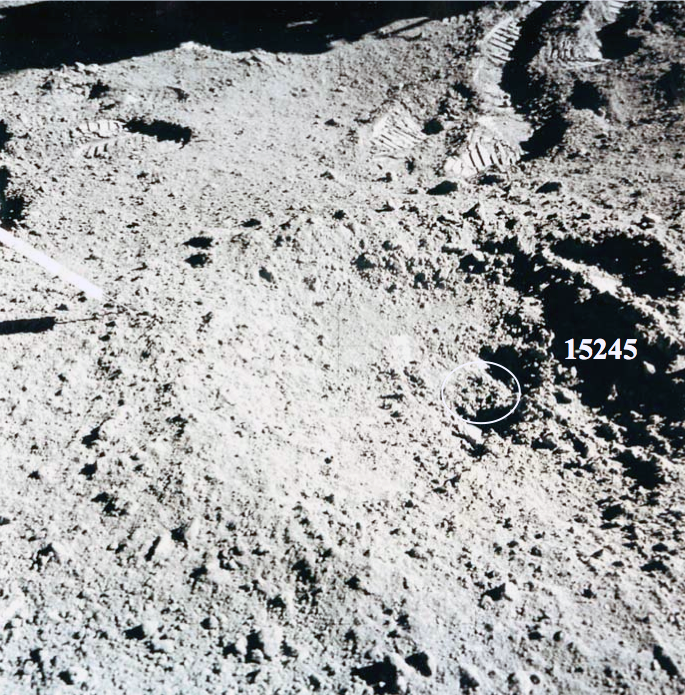
Fact sheet
15245 was picked up as a delicate glass-welded soil breccia which broke up into about 90 small fragments, the largest of which was only 12 grams. This complex breccia contains fragments of Mare basalt, KREEP basalt, plutonic rocks, a suite of minerals (olivine, pyroxene, plagioclase feldspar, ilmenite, troilite and metallic iron), glass (colourless, brown, mustard yellow and pale green) and a high percentage (22%) of agglutinates.
Rotation 1 shows a wispy fragment of pale green glass plus a few mineral fragments, whereas rotation 2 is thought to show an unusual devitrified glass bead.
The sample weighed 115.5 grams before analysis and has not been dated.
Further details of this and other Apollo samples are here: http://curator.jsc.nasa.gov/lunar/
The Apollo 15 landing site was in the Apennine Highlands, and close to Hadley Rille — a long, narrow winding valley. Approximately 76 kg of lunar material, including soil, rock, core-tube and deep-core samples, were returned to Earth.
This mission was the first flight of the Lunar Roving Vehicle which allowed the astronauts to venture further from the Lunar Module than in previous missions. During three periods of extravehicular activity, or EVA, on July 31st, and August 1st and 2nd, Scott and Irwin completed a record 18 hours, 37 minutes of exploration, travelling 17.5 miles, in the first car that humans had ever driven on the Moon.
Apollo 15 was launched on 26 July 1971.







